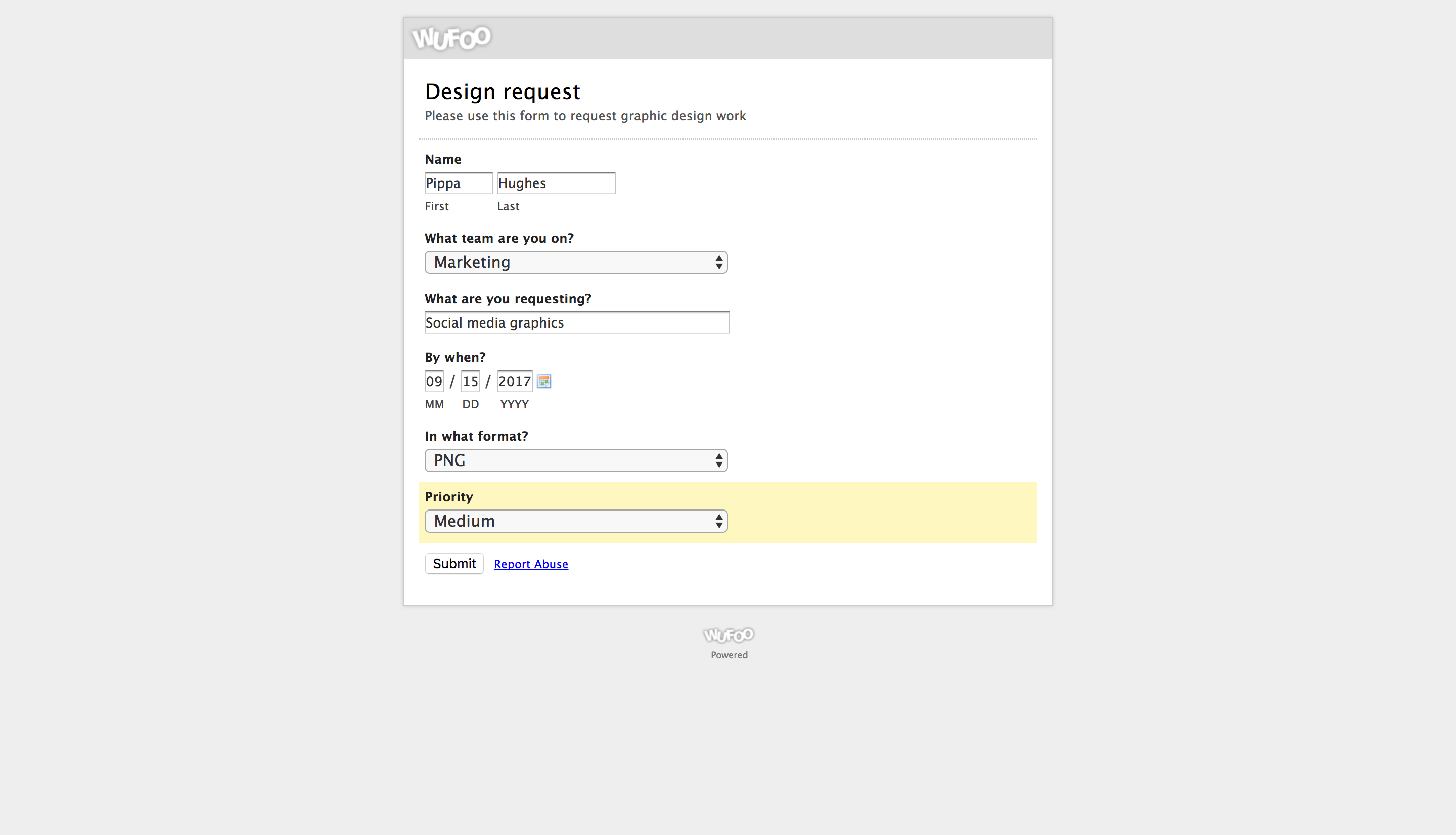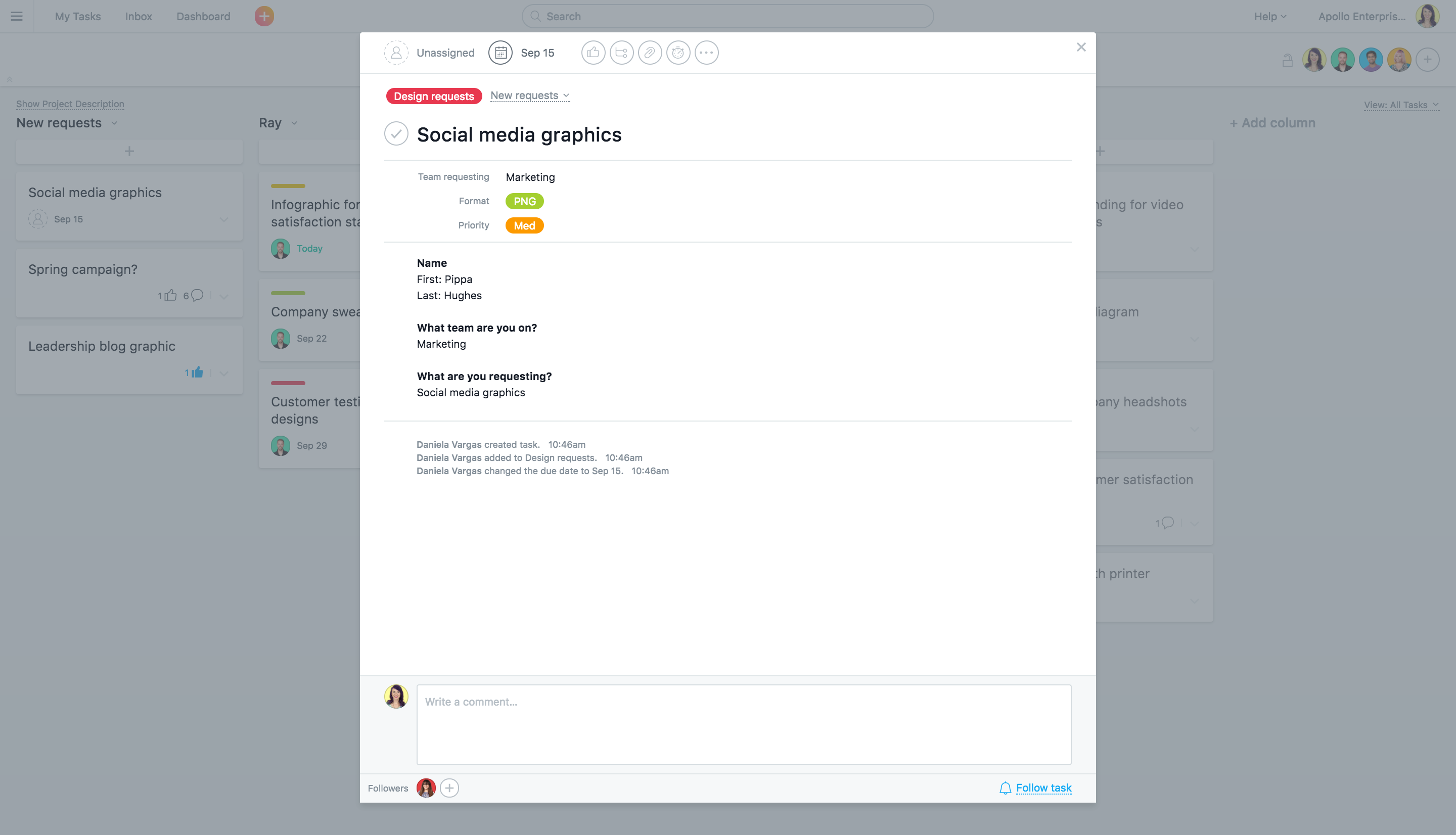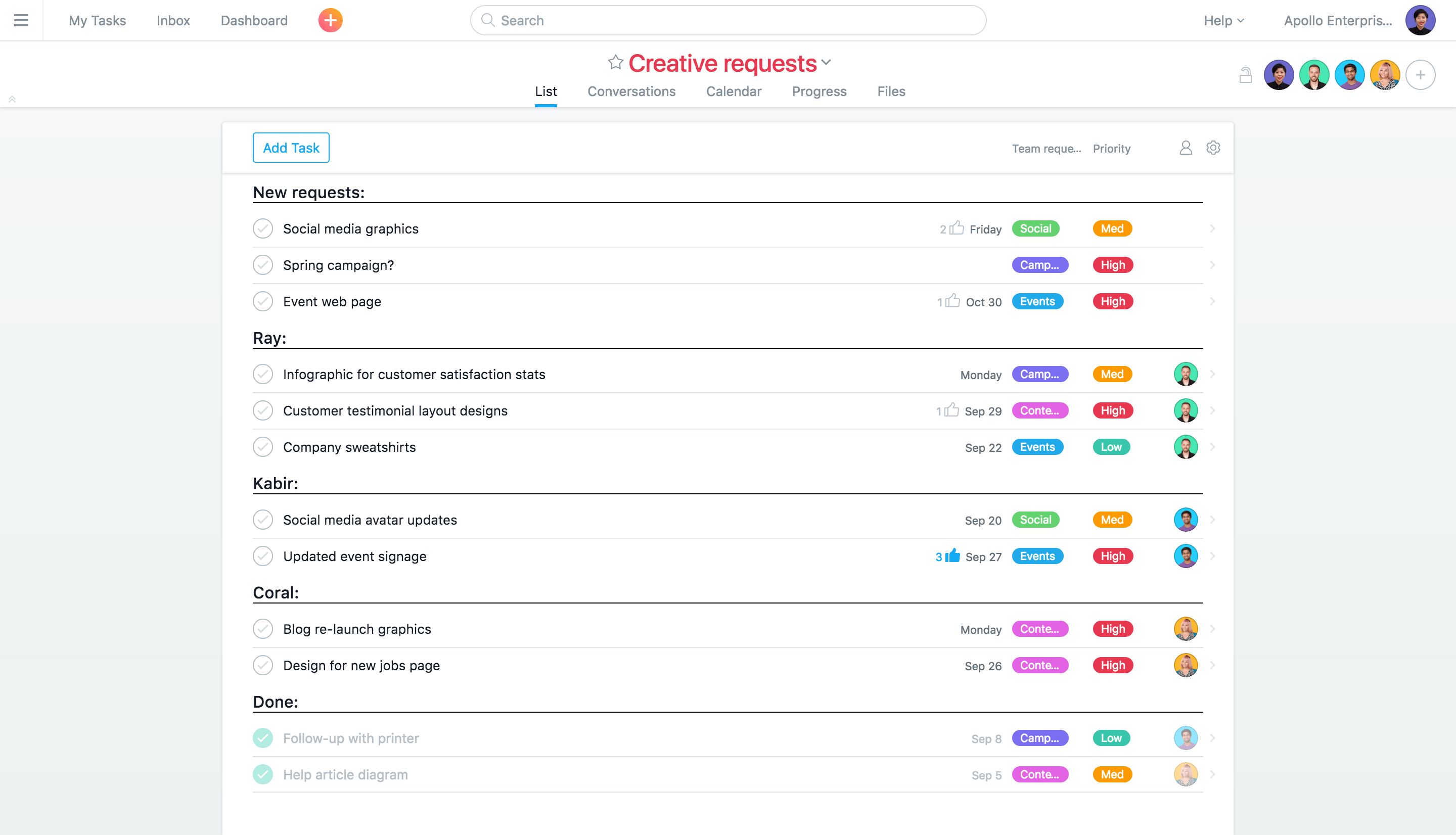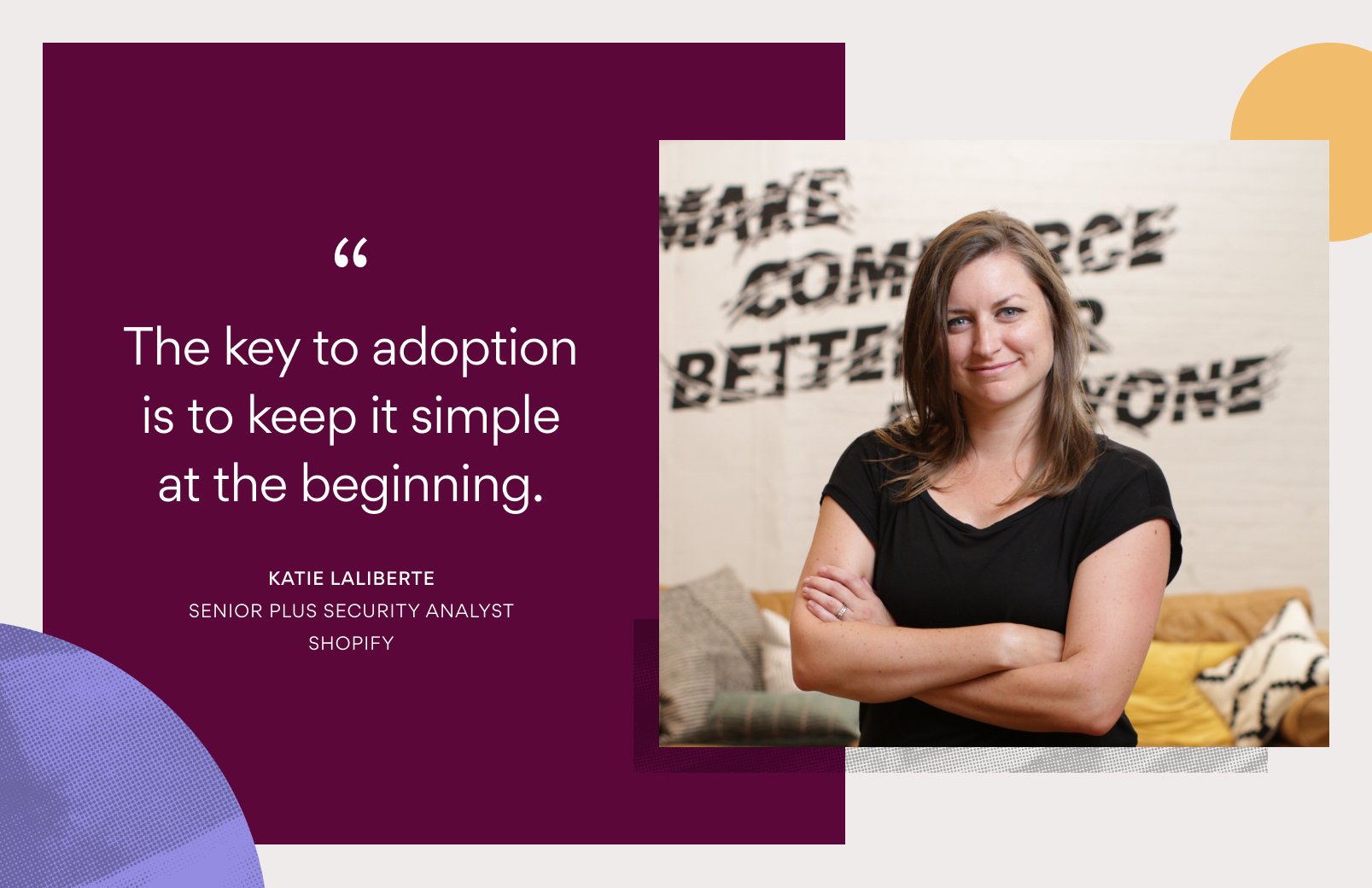Stop the drop-bys: how to master the work request

We’ve all had an Office Space moment: when someone drops by your desk to give you a new project and needs it by tomorrow—and it’s not greeeeat. Or maybe your designer was working on a “quick project” for sales that you didn’t even know about.
Even with a great planning process, teams like design, IT, and marketing can’t always account for the needs of other departments, sudden and time-sensitive opportunities, or new work that arises as projects progress. Without a clear system for creating and tracking requests, priorities can fall to the wayside, leaving teams overwhelmed and less engaged—adding up to a less-than-ideal professional experience.
Without a clear system for creating and tracking requests, priorities can fall to the wayside, leaving teams overwhelmed and less engaged.
So instead of being subject to anyone who walks by with a “quick question,” follow along to learn how to create a more productive way to file and track work. Using it, you and your team can stay on top of priorities while moving new requests forward to maximize productivity.
Create a template for incoming requests
A work request is any type of “ask” or to-do from around your organization for your team, as compared to project work your team is already aware of and working on. They seem easy enough, but often lack the details to be tackled effectively, getting your team off track and wasting time.
Instead, you can create a better system to capture and prioritize work requests by making a request template. First, start thinking about what information is most important when making new requests of your team. For example, you might want to have requesters indicate the goals, format, timeline, or stakeholders.
Next, get your template in a format that’s easy for requesters to fill out. In Asana, that could be creating a template task in a project with custom fields. You could also try a Wufoo or Google form (which both integrate with Asana.) Make sure the template is in an easily accessible place so anyone in your organization can find and use it.


Track and organize work requests
Once your template is ready, announce your new process to the teams you support. Be sure to explain why you’re doing it so people follow and buy into it (think productivity and priority.) If you still get the dreaded desk drop-bys or one-off emails, you can redirect them to the template. This can be especially empowering for contributors who might feel obligated to take on the work without pushing back or getting more details.
This can be especially empowering for contributors who might feel obligated to take on the work without pushing back or getting more details.
To manage your incoming work requests, you can create an Asana project. Why Asana? It helps you centralize your work and projects to make it clear who’s doing what by when—all in one place. Your team can tackle requests more effectively and efficiently, ultimately making work more engaging. Here’s how:
- Create an Asana project. You can organize it by the request type, project size, teammate, and beyond. In the example above, design requests are grouped by teammate so it’s easy to quickly gauge bandwidth as new requests come in.
- Add custom fields. These help you track more pieces of information in the request template, like priority, format, etc.—without bogging down requests with TMI that’s hard to parse. (Plus, you can see how the fields sync up nicely with the Wufoo form from earlier :smirk:.)
- Select a project owner. They’ll read through new requests to make sure the details are in order, then get them prioritized and assigned out to the team (instead of people having to blindly accept ideas that aren’t fully baked yet.)
- Follow along. Stakeholders wanting to keep track of the progress on their request can stay tuned as a task follower.
“Transitioning from making requests via email to making them in Asana quickly became second nature. Now when we assign tasks to create sketches or research design inspiration, I feel confident that people can follow through.”
—Ellen Van Der Laan, Chief Creative Officer at BAGGU
Examples of work request projects
Depending on the team, your request project might look a little different. You can use this project in a variety of ways to track:
- Creative needs for content, graphic and web design, etc.
- Bugs with an engineering or web dev team
- IT and help desk tickets
- Ad-hoc review or feedback requests
- Social media posts
- Budget requests and approvals for finance
- HR benefits questions
- Team coordinator requests for scheduling meetings and team events
How to know you’re doing it right
With any new process, you should have a clear goal and a way to know you’ve hit it. Here’s what to look for to know your request process is gaining traction:
- All work gets done faster, and you have fewer missed deadlines
- Work doesn’t fall through the cracks
- Your team isn’t bogged down with busy work
- Teammates know what they’re working on and why
- Duplicate work doesn’t happen as much (if at all)
- There’s clarity around expectations
- Emails and in-person visits to request work happen less often
Over time, you can continue to tweak your request project and template to make it work for you.
Benefits of formal work requests
For some, having a more formal work request system might seem like tacking on extra work. But if anything, asking for more details up front saves time in the long run and leads to better work and higher productivity. Plus, you can track work in one place instead of getting requests from all over and not being aware of other work going on across your team.
Your team members are more likely to stay engaged knowing that their work is truly a priority—and not subject to anyone that happens to walk by their desk.
Asking for more details up front saves time in the long run and leads to better work and higher productivity.
Getting organized and having a system to file, track, and prioritize new work requests helps teams hit their big goals, while still getting to the work that crops up along the way.
Learn how Asana can help you deliver a great employee experience by running all of your cross-functional programs and activities better.


